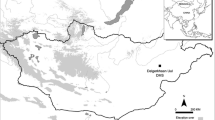Abstract
Over the last twenty years, there has been a discernible increase in the number of scholars who have focused their research on metal production, working and use in antiquity, a field of study which has come to be known as archaeometallurgy. Materials scientists and conservators have worked primarily in the laboratory while archaeologists have conducted fieldwork geared to the study of metal technology in a cultural context with laboratory analysis as one portion of the interpretive program.
Similar content being viewed by others
References
P. Schmidt, “Early Iron Age Settlements and Industrial Locales in Westlake,” Tanzania Notes and Records,84/85 (1982), pp. 77–94.
P. Schmidt, Historical Archaeology: A Structural Approach in an African Culture (Westfield: Greenwood Press, 1978).
Excavations, experimental archaeology and laboratory analysis have focused on the ancient smelting activities and products since habitation and forging sites have been difficult to find in the densely populated Kagera region.
P. Schmidt and D. Avery, “Complex Iron Smelting and Prehistoric Culture in Tanzania,” Science,201 (1978), pp. 1085–89; P. Schmidt and S.T. Childs, “Innovation and Industry during the Early Iron Age in East Africa: The KM2 and KM3 Sites of Northwestern Tanzania,” African Archaeological Review, 3 (1985), pp. 53-94.
D. Avery and P. Schmidt, “A Metallurgical Study of the Iron Bloomery, Particularly as Practiced in Buhaya,” JOM, 31 (1979), pp. 14–20.; P. Schmidt and D. Avery, “More Evidence for an Advanced Prehistoric Iron Technology in Africa,” Journal of Field Archaeology, 10 (4) (1983), pp. 421-434.
S.T. Childs, “Style in Technology: A View of the Early Iron Age Iron Smelting Technology through its Refractory Ceramics” (Ph.D. thesis, Boston University, 1986).
N. David, R. Heimann, D. Killick and M. Wayman, “Between Bloomery and Blast Furnace: Mafa Iron-Smelting Technology in North Cameroon,” African Archaeological Review, 7 (1989), pp. 183–208.
For a more complete discussion of the techniques involved and the quantified results, the reader is referred to S.T. Childs, op. cit. 6.
S.T. Childs, “Clay Resource Specialization in Ancient Tanzania: Implications for Cultural Process,” Ceramic Ecology Revisited 1987, ed. C. Kolb (Oxford: BAR International Series 436ii, 1988), pp. 1–31.
We do not yet know how many tuyeres were used in the Early Iron Age furnaces.
S.T. Childs, “Petrographic Analysis of Archaeological Ceramics,” Materials Research Society Bulletin, 14 (March 1989), pp. 24–29.
S.T. Childs, “Clays to Artifacts: Resource Selection in African Early Iron Age Iron-Making Technologies,” Pottery Technology: Ideas and Approaches, ed. G. Bronitsky (Boulder, Colorado: Westview Press, 1989), pp. 139–164.
Author information
Authors and Affiliations
Rights and permissions
About this article
Cite this article
Childs, S.T. Refractory ceramics and iron smelting in East Africa. JOM 42, 36–38 (1990). https://doi.org/10.1007/BF03220468
Issue Date:
DOI: https://doi.org/10.1007/BF03220468




